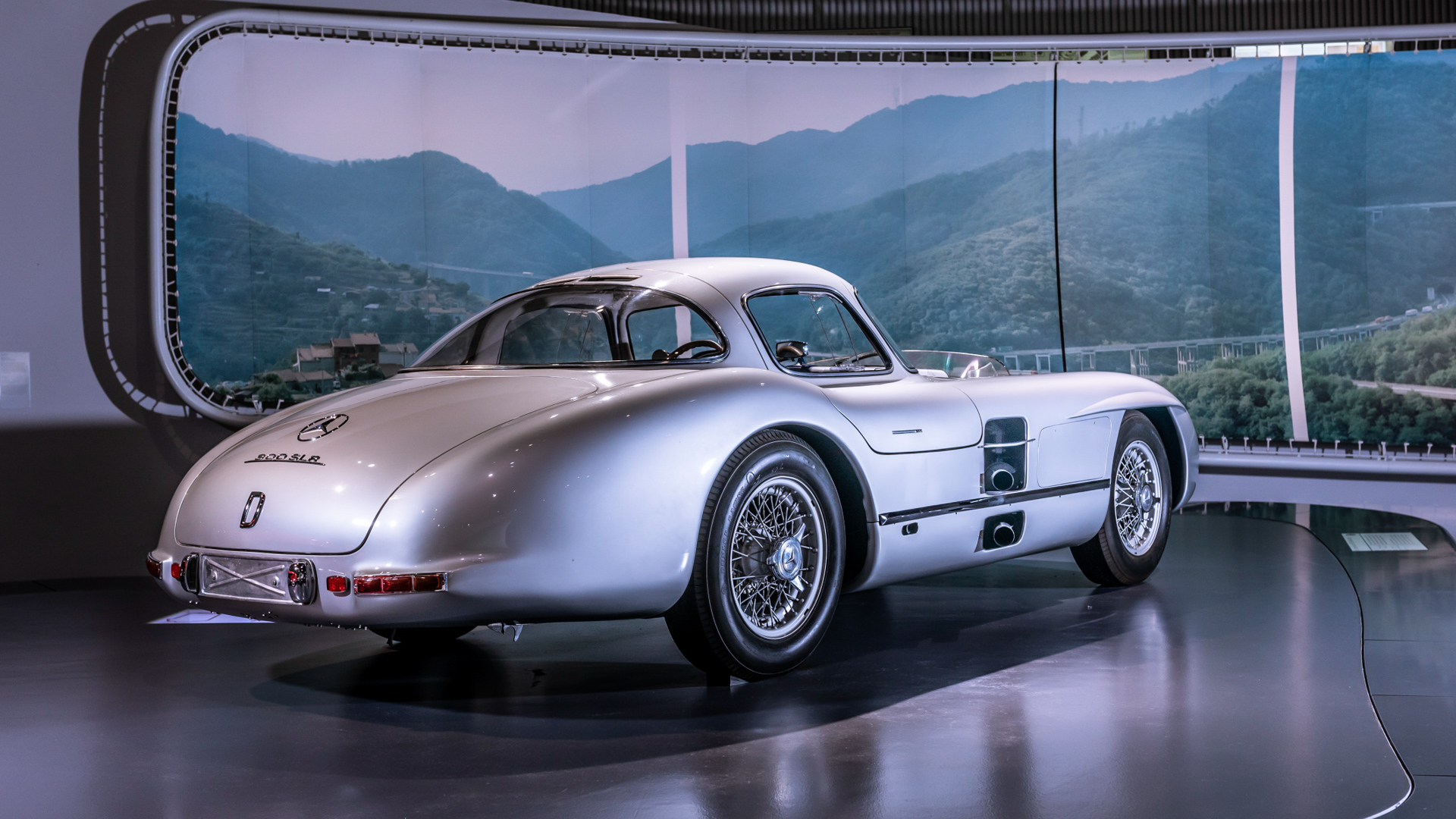

It’s been a little piece of trivia I’ve known since childhood: the 1962 Ferrari 250 GTO is the most expensive car ever sold. When I was a teen, one auctioned at $38 million; more recently, one sold for $48 million. It’s time to update my fun-fact bank, however, because according to a new report from Hagerty, that record was completely destroyed by a 1955 Mercedes Benz 300 SLR “Silver Arrow,” which allegedly sold for $142 million.
Even more unprecedented than the absurd nine-figure price tag was that this car was reportedly sold by Mercedes from its internal collection of historic vehicles. According to insiders that spoke with Hagerty, a small number of heavily vetted collectors who had both deep pockets and an appreciation for classic Mercedes cars who would agree to not re-sell the vehicles were flown into Stuttgart for a private auction on May 6. There is where the Silver Arrow allegedly fetched its massive sum.

The Silver Arrow name itself is used for a variety of Mercedes race cars built both before and after WWII; the specific car in question is believed to be one of the nine road-legal coupe variants of the W196 300 SLRs from the pinnacle of Mercedes’ dominance of sportscar racing.
The W196 is one of Mercedes-Benz’s most successful vehicles of all time. In 1955, the race versions of the Silver Arrow won nearly everything they were entered in, with Stirling Moss piloting them to wins at the Mille Miglia and Targa Florio, which ultimately landed Mercedes a World Sportscar Championship victory. Out of the nine road-going versions built, two were gullwing-doored hardtops known as the Uhlenhaut coupes, so named for the car’s lead designer, Rudolph Uhlenhaut, who daily drove one throughout the 1950s. The two coupe road versions were, essentially, a 300 SL Gullwing body heavily modified to fit the SLR’s chassis, and were intended for competition in later seasons.

However, it never got a chance to race in 1956 and beyond, because the W196 also has the dubious record of being the car that ended Mercedes’ race program for 30 years and temporarily banned motorsports across Europe.
In the 1955 24 Hours of Le Mans, a 300 SLR driven by Pierre Levegh crashed into the back of another competitor. The Mercedes launched off the car it ran into, flew over a protective berm at 125 miles an hour, and landed into the crowd on the other side. It immediately erupted in flames; attempts to put out the inferno with water only worsened the conflagration, as the body of the W196 was constructed with magnesium alloy. Magnesium fires cannot be extinguished with water; instead, it makes them worse. Eighty-four people died, making it the most lethal racing accident in the history of motorsports. Mercedes, which had already been eyeing an exit from FIA competition, pulled out of racing at the end of the 1955 season and would not return for several decades as a front-line constructor.
Because of this sudden departure from racing, Mercedes never built more than two of the gullwing-doored slicktop W196S examples, and for nearly 30 years, it was the final race car the company directly produced. Simply put, it is the absolute pinnacle of the company’s early postwar period. With the pair both in Mercedes’ own hands for the past seven decades, the chance to buy one is astonishing, but it’s still not quite as jaw-dropping as $142,000,000. With that cash, you could buy quite a bit, including roughly half of the Lexus LFA‘s entire 500-vehicle production run, which honestly sounds like more fun.
Got a tip or question for the author? Contact her directly: victoria.scott@thedrive.com